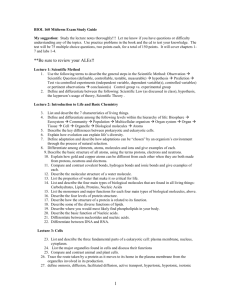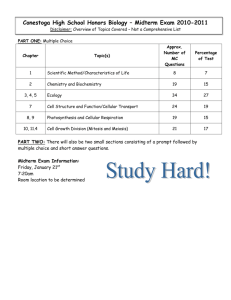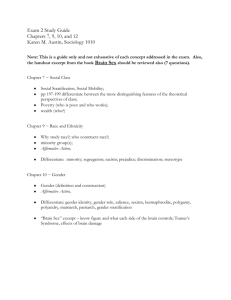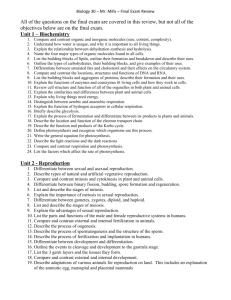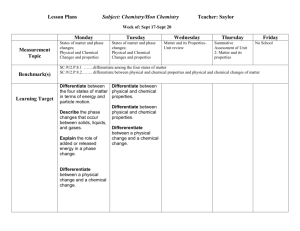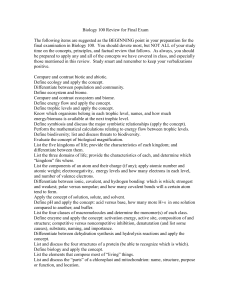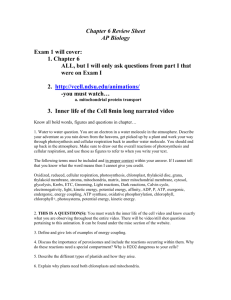Biology Midterm Review……
advertisement
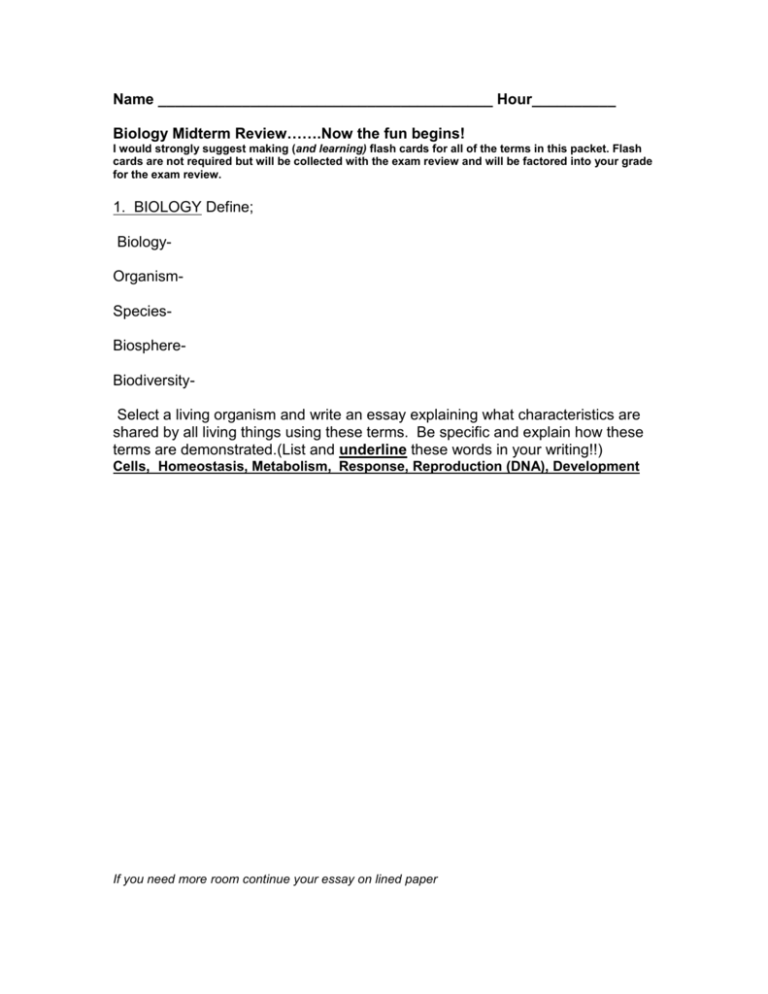
Name ________________________________________ Hour__________ Biology Midterm Review…….Now the fun begins! I would strongly suggest making (and learning) flash cards for all of the terms in this packet. Flash cards are not required but will be collected with the exam review and will be factored into your grade for the exam review. 1. BIOLOGY Define; BiologyOrganismSpeciesBiosphereBiodiversitySelect a living organism and write an essay explaining what characteristics are shared by all living things using these terms. Be specific and explain how these terms are demonstrated.(List and underline these words in your writing!!) Cells, Homeostasis, Metabolism, Response, Reproduction (DNA), Development If you need more room continue your essay on lined paper 2. SCIENTIFIC METHOD - Write a simple controlled experiment that includes all of these: (List and underline these words in your writing) Questions Independent variable Hypothesis Dependent variable Observations Constant 3. MICROSCOPE – label the parts and identify their function in the margin. List how to calculate magnification; 4. CELL THEORY- Name the 3 parts of the cell theory. 1 2 3. 5. CELL ORGANELLES Draw the following cells and label (where applicable) their; cell membrane, cell wall, vacuole, ribosome, mitochondria, chloroplast, nucleus, Golgi apparatus, lysosome, endoplasmic reticulum, cytoplasm, vesicles, & DNA Plant Animal Prokaryote (bacteria) 6. CELL TYPES – Draw a Venn Diagram relating eukaryote and prokaryote cells. 7. PLANT/ANIMAL CELLS – Draw a Venn Diagram to compare and contrast plant and animal cells: Cell membrane (selectively permeable) Mitochondria Ribosome Vacuole Chloroplast Cytoskeleton Cytoplasm Nucleus Cell wall 8. CELL TRANSPORT METHODS – Define through pictures (DRAW) the following cell transport methods: (colored pencils needed!) DO THESE ON A SEPARATE PIECE OF PAPER Passive transport Diffusion Concentration gradient Equilibrium Osmosis Hypotonic Hypertonic Isotonic Facilitated diffusion carrier proteins ion channels active transport exocytosis endocytosis 9. ENERGY FLOW – Create a diagram using the following terms to draw the movement of energy. Make it a cycle with pictures and underline these terms in your drawing. (Hint; begin your drawing with the organelles) Mitochondria Photosynthesis Glucose ATP (Stored energy) Chloroplast Cellular respiration Carbon dioxide Oxygen Write out the balanced equation for photosynthesis here; Write out the balanced equation for cell respiration here; List some factors that affect the rate of photosynthesis. Explain how. Differentiate between an autotroph, heterotroph, producer, and consumer. What is the difference between the light dependant and light independent reactions? 10. CELLULAR RESPIRATION – What are the Where do the How much differences between above take place? ATP do they these processes? produce? Aerobic respiration What are their products? Anaerobic respiration Fermentation 11. MITOSIS AND MEIOSIS – Differentiate between mitosis and meiosis. List the stages of each and what occurs. Draw a picture of homologous chromosomes to the right and label the following; Chromosomes Chromatid Centromere Crossing over In which process do homologous chromosomes pair up? Mitosis or Meiosis? Differentiate between haploid and diploid. What are the human numbers for this? Look on page 172 and read graph 2. Answer questions 1 and 2 Differentiate between autosomes and sex chromosomes. Differentiate between interphase and cytokinesis. Differentiate between somatic cells, gametes, and zygote. Differentiate between spermatogenesis and oogenesis. Differentiate between stem cells, apoptosis, metastasize, carcinogen, and benign. 12. ASEXUAL & SEXUAL REPRODUCTION What is the difference between these processes? Name 2 organisms that reproduce asexually and 2 that reproduce sexually. What is binary fission? 13. HEREDITY – Set up a monohybrid (one trait) cross and use these terms to describe in sentence form what is taking place: Give examples to explain these words. Allele, phenotype, punnett square, genotype, phenotypic ratio,genotypic ratio, Gene, Dominant, recessive, homozygous, heterozygous, probability Define Genetics and why Gregor Mendel is considered the father of genetics; Differentiate between purebred and hybrid. Differentiate between complete dominance, incomplete dominance, sex linked and codominance. 14. BOYS AND GIRLS – What are the genetic differences between boys and girls? XX XY 15. BLOOD TYPES – List the possible genotypes for each type of blood and phenotype. A B O AB Know what offspring they will produce when crossed*** 16. KARYOTYPE – What is this and what is it used for? Know what errors cause Down syndrome. 17. PEDIGREE – What is this? On a separate sheet of paper draw a pedigree for tracing sex linked genes for color blindness (page 215) Remember! Doing the review is the first half of studying. The second half is hiding the answers from yourself and making sure you know them without reading them from your book or homework. Good suggestions on how to do this is with flash cards, having someone orally quiz you, or rewriting important concepts (terms) without looking at the answers. Good Luck
